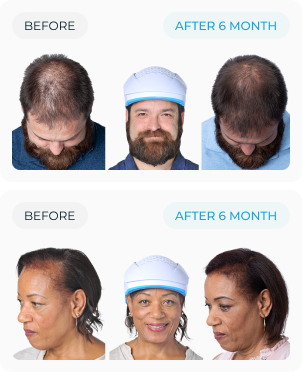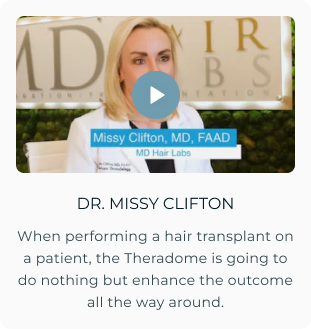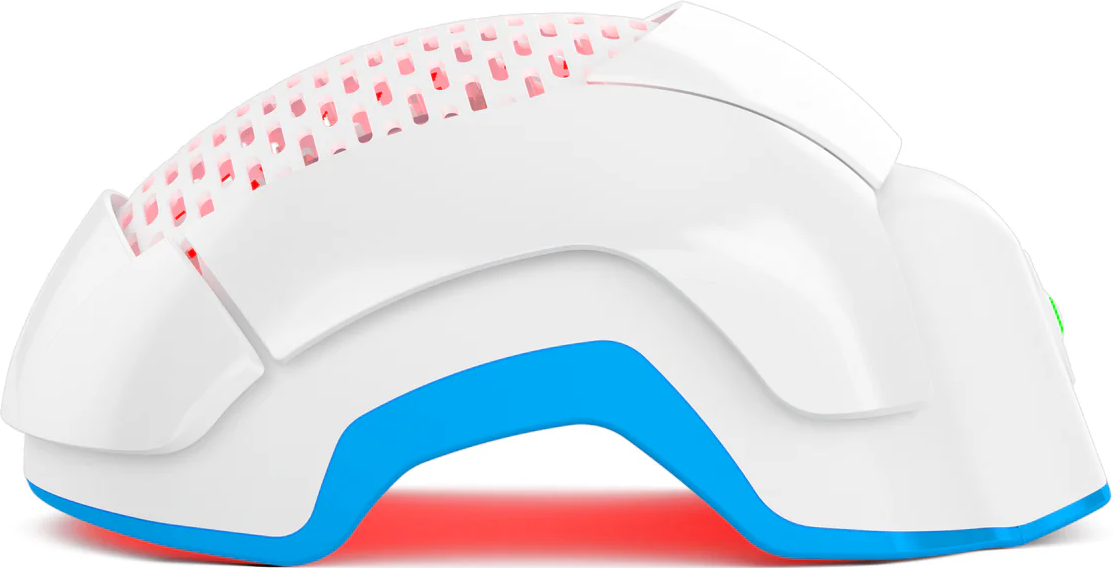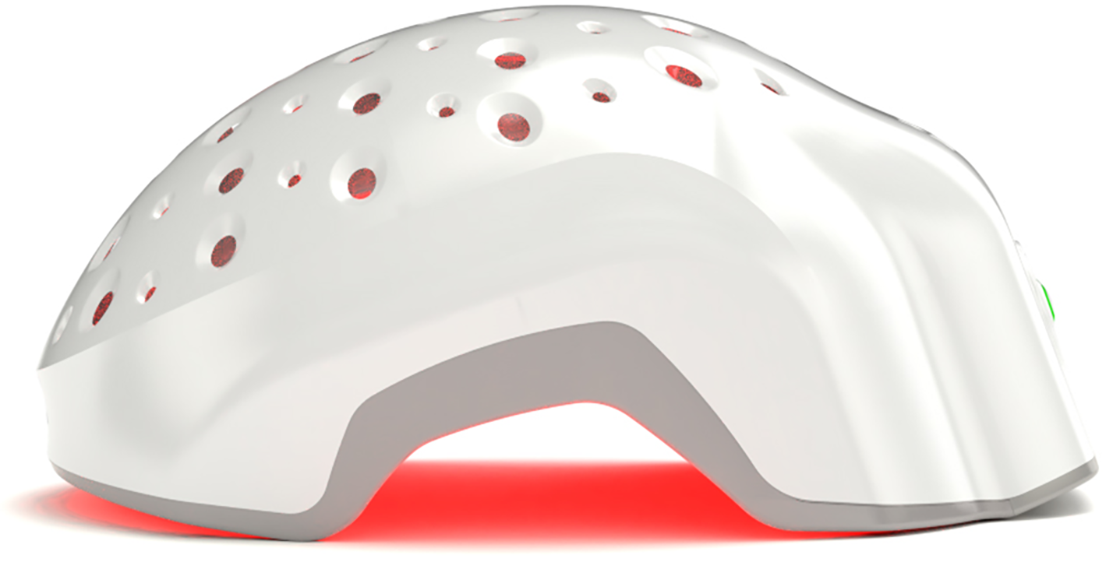Breast cancer is the second most common cancer for women in America (behind skin cancer). According to Breastcancer.org, 1 in 8 women will develop breast cancer. While there are too many factors at play to really narrow the causes, some scientists speculate that genes and lifestyle factors play a role.
Traditional breast cancer treatment can involve a combo of chemotherapy and sometimes radiation to destroy the cancer cells. First, radiation is never an option for left-breast cancer patients, as this could severely damage the heart.
Radiation treatment can also cause hair loss. Find our how.
As for chemo? Chemo destroys anything that rapidly divides at the molecular level. This includes cancer cells, but it also includes hair follicles, which multiply every 24 hours.
This is why chemo patients frequently lose their hair. While your hair does typically grow back after treatment, it is often a different quality and texture.
Advancing Technologies
The good news is that first of all, today’s advancing technologies are such that thorough screenings and regular medical check-ups can help anyone concerned about breast cancer– either for prevention or early detection. Early detection means much greater chances of remission. And anyone horrified at the prospect of losing hair could potentially also address this problem. Current standard options for fighting chemo-induced hair loss can be incommodious, but much more effective (and less-invasive!) methods point to the use of laser hair therapy.
Laser hair therapy is a new, advanced natural solution to hair loss that is effective in treating alopecia (the medical term for hair loss) in both genders with no side effects. Its applications are becoming more and more popular around the globe: hair loss experts, scientists, and physicians are publishing their clinical studies regarding the use of laser hair therapy for various hair loss conditions, such as androgenetic alopecia, alopecia areata, and chemo-induced hair loss. One particular study shows a 39% hair count increase in androgenetic alopecia patients undergoing laser hair therapy treatment every other day for 16 weeks.
Chemo-Induced Hair Loss
What about laser hair therapy studies that involve chemo-induced hair loss? Here’s where it gets even more interesting. You may or may not be aware of the fact that we humans share 99% of our genes with mice, which is why medical research often involves testing new therapies on the mice family. A promising clinical study regarding chemo & hair loss involves hair regrowth in a rat model with FDA-cleared laser hair therapy technology.
In this study, rats were given chemo agents in order to induce alopecia. The rats treated with laser hair therapy regrew hair five days earlier than the rats who were not. Five days doesn’t seem like much, but it most likely means a few months for humans. To boot, the quality and texture of fur regrowth with laser hair therapy were just as good, if not superior to the rats’ original coat.
And no– the laser hair therapy did not affect the efficacy of the chemo. These results, combined with the fact that previous studies show that laser hair therapy promotes hair regrowth in most hair loss patients, indicate that laser hair therapy could prevent or reduce chemo-induced hair loss as well as accelerate hair regrowth during or after chemo treatments.
Hair Regrowth Stages After Chemo
Hair regrowth after chemotherapy treatment typically follows a predictable pattern but the exact timeline and experience varies with each individual. Not everyone will have the same regrowth experience, and factors like the type of chemotherapy, dosage, and individual differences in hair growth can influence the regrowth process. Here are the general stages of hair regrowth after chemo:
Initial Growth (Weeks to Months After Treatment)
In the weeks and months following the completion of chemotherapy, some individuals may notice very fine, soft, and colorless hair starting to regrow. This initial growth may be barely visible and may resemble peach fuzz.
Short, Sparse Hair (2-4 Months):
Over the next couple of months, the regrowing hair may become slightly thicker and more noticeable but often remains sparse and very short. The texture may be different than your pre-chemotherapy hair.
Increased Density and Length (3-6 Months):
After three to six months of completing chemo, many people experience increased hair density and length. The hair may still be soft and somewhat curly or wavy.
Fuller Growth (6-12 Months):
By six to twelve months post-chemotherapy, hair often becomes fuller and thicker, resembling a more normal appearance compared to pre-chemotherapy hair. However, it may still have a slightly different texture and color.
Return to Normal (12+ Months):
After a year or more, the majority of individuals will have hair that is closer to their pre-chemo texture, color, and thickness. However, some may experience permanent changes in hair color and texture.
Radiation Therapy Induced Hair Loss
Hair loss due to radiation therapy also known as radiation-induced alopecia, is a potential side effect of radiation treatment for cancer. The extent and likelihood of hair loss can vary depending on several factors including the type of radiation, the dose, the area being treated, and the individual's overall health.
The extent of hair loss from radiation therapy is typically localized to the area being treated. Also, it can cause only partial hair loss or thinning. Hair loss is often temporary and will regrow within a few months after completion of the treatment. However, in some cases, the hair may regrow slowly and be slightly different in texture or color.
Androgenic Alopecia
Specific studies show that most patients diagnosed with androgenetic alopecia undergoing laser hair therapy experience a decrease in vellus hairs, an increase in terminal hairs, and a thicker hair shaft diameter. This leads to overall improved thickness and an optimized hair growth cycle. It may be possible to prevent or reverse hair loss caused by chemo treatment using these same principles.
Theradome for Breast Cancer Hair Loss
Sending breast cancer patients to expensive and inconvenient laser hair therapy clinics is usually not an option. It can conflict with their medical treatment schedules and aggravate psychological stress and physical exhaustion. Not to mention it unnecessarily compromises their weakened immune systems with an increased risk of virus exposure. On the other hand, at-home laser hair therapy caps or helmets do not disrupt compliance or decrease treatment efficacy. With this approach, you can potentially reverse chemotherapy-induced hair loss faster. Or, best of all, you may be able to avoid it altogether.
The Theradome LH80 PRO is the world’s most technologically advanced laser hair therapy device. And patients can use it in the comfort and privacy of their homes. Developed by a former NASA scientist, the Theradome relies solely on science and cutting-edge technology. Its revolutionary approach treats hair loss at a cellular level. It is also ultra-convenient since it's hands-free and cordless. Treatment sessions are timed automatically, and a voice-over lets you know when your sessions are over.
FDA trials have proven that wearing the Theradome helmet is effective for most patients with only 20-minute, twice-a-week sessions that, over time, result in minimized shedding, increased hair shaft diameter, and new hair growth.
It's your time to shine! Let Theradome guide you on the path to a revitalized scalp and flourishing hair. Act now to unlock the potential of your hair—order your laser helmet and let your radiance show!
Naturally, if you wish to explore this option, make sure to talk to your oncologist! And let us know if you have any questions!

























